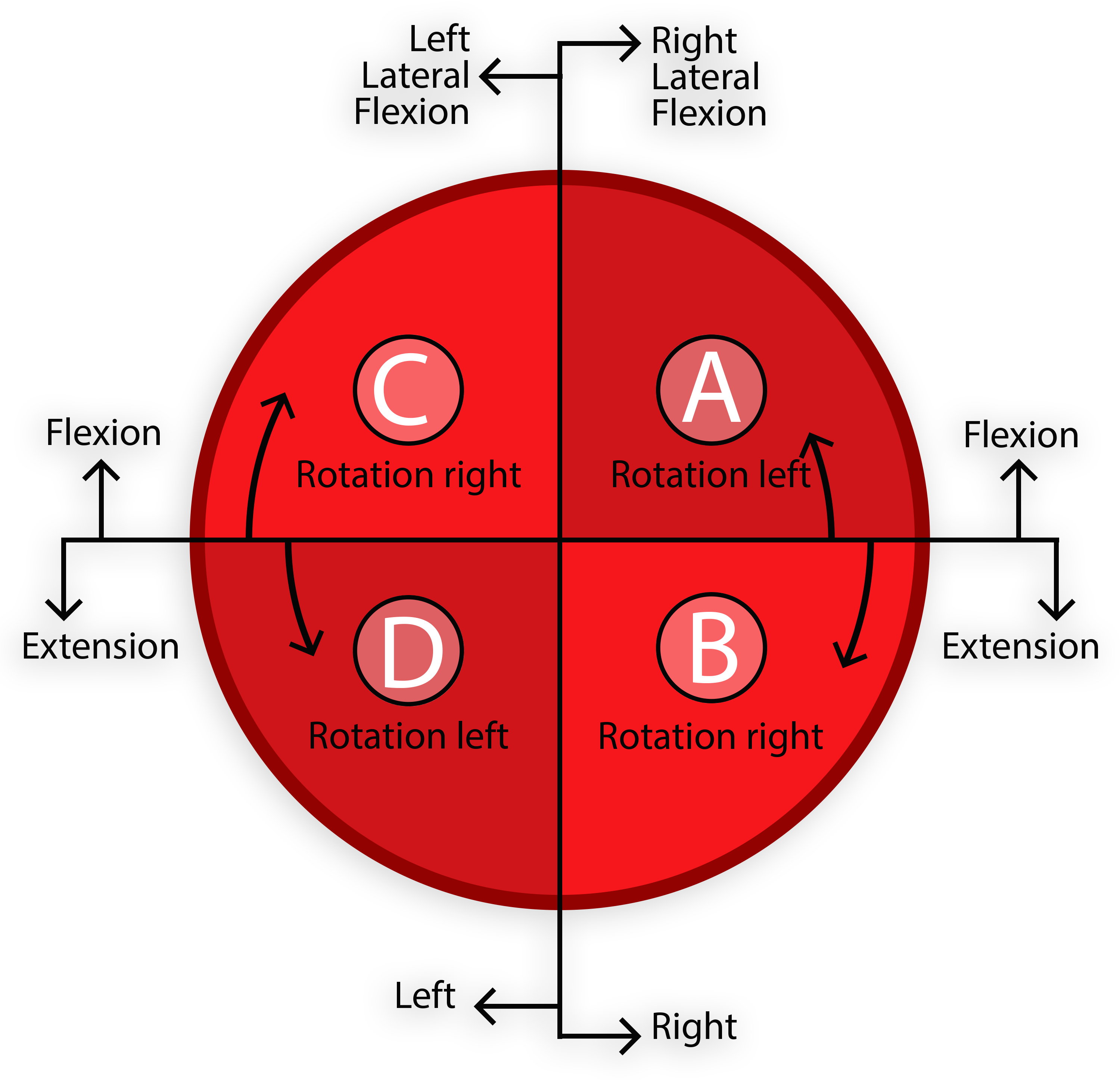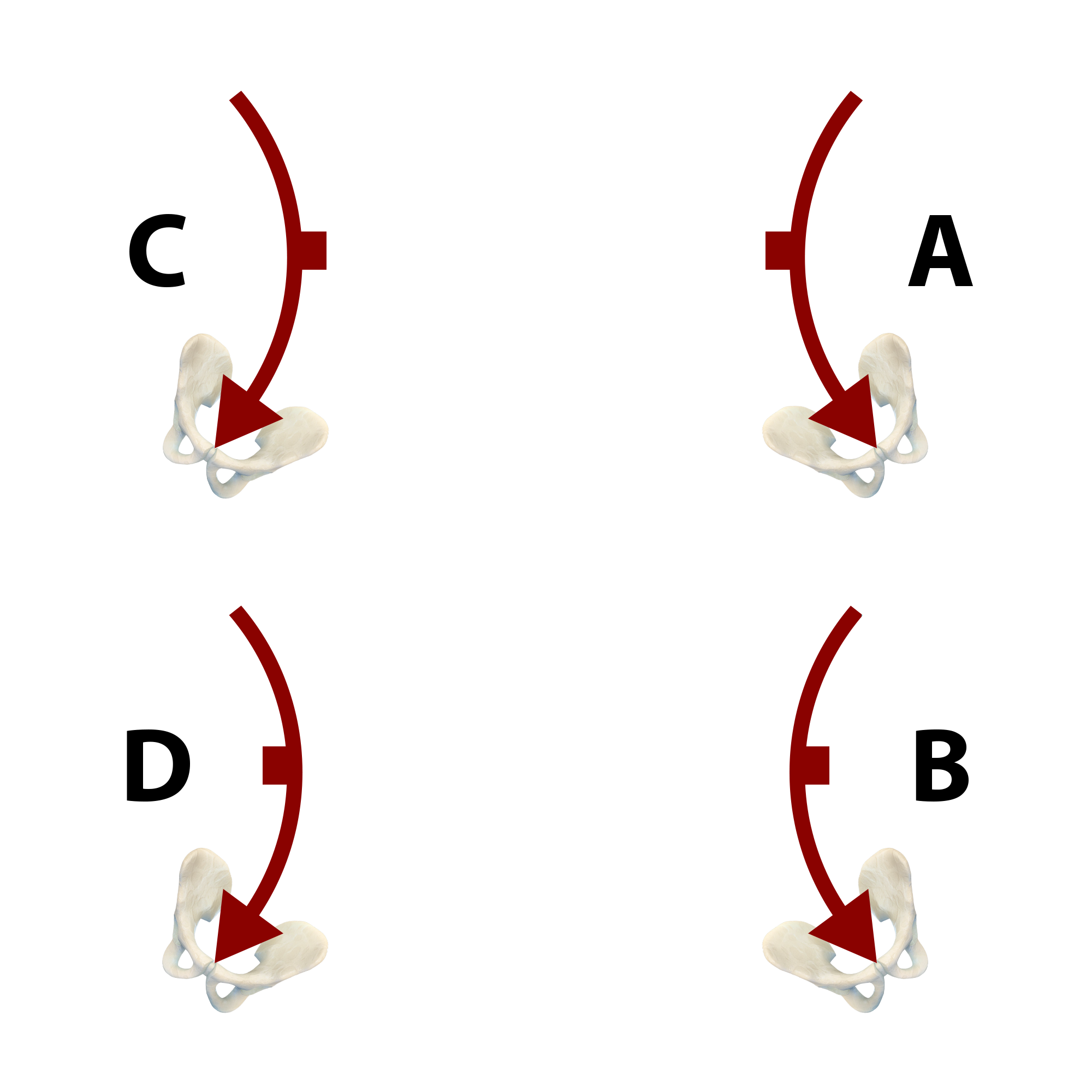Terminology
Language / Nomenclature
Within 3DMT symbols have been developed, which indicate in a simple way how the vertebral column as a whole, or as a part thereof, moves or stands in space. Through observations, one has come to the conclusion that there are four different combinations in the 3 dimensions.
Flexion | vs | extension | --> | sagittal plane |
left rotation | vs | right rotation | --> | vertical axis |
left lateral flexion | vs | right lateral flexion | --> | frontal plane |
Combinations
flexion | left rotation | right lateral flexion | A |
flexion | right rotation | left lateral flexion | C |
extension | left rotation | left lateral flexion | D |
extension | right rotation | right lateral flexion | B |

Is it remarkable that in extension, lateral flexion and rotation are always aligned. In flexion however, they are in opposite directions. So, if there is a movement or posture and two dimensions are known, then the 3rd will be known. For example, if there is a lateral flexion to the left combined with a left rotation, then it is known that this part of the vertebral column is in an extension (typology D). In a flexion which is combined with a rotation to the right, there is a lateral flexion to the left (typology C).
In order to facilitate communication, there are given the letters A, B, C, and D. A and C are the combinations of flexion-oriented and B and D are the extension targeted combinations
The graphic representations of the typologies displays only the rotational component and the lateral flexion. The block adjacent to the spinal column represents the rotation component; on the right side means a right-rotation, a left-rotation on the left-hand side. With these two parameters, it is clear, therefore, whether there is a flexion or of an extension as the 3rd dimension.



